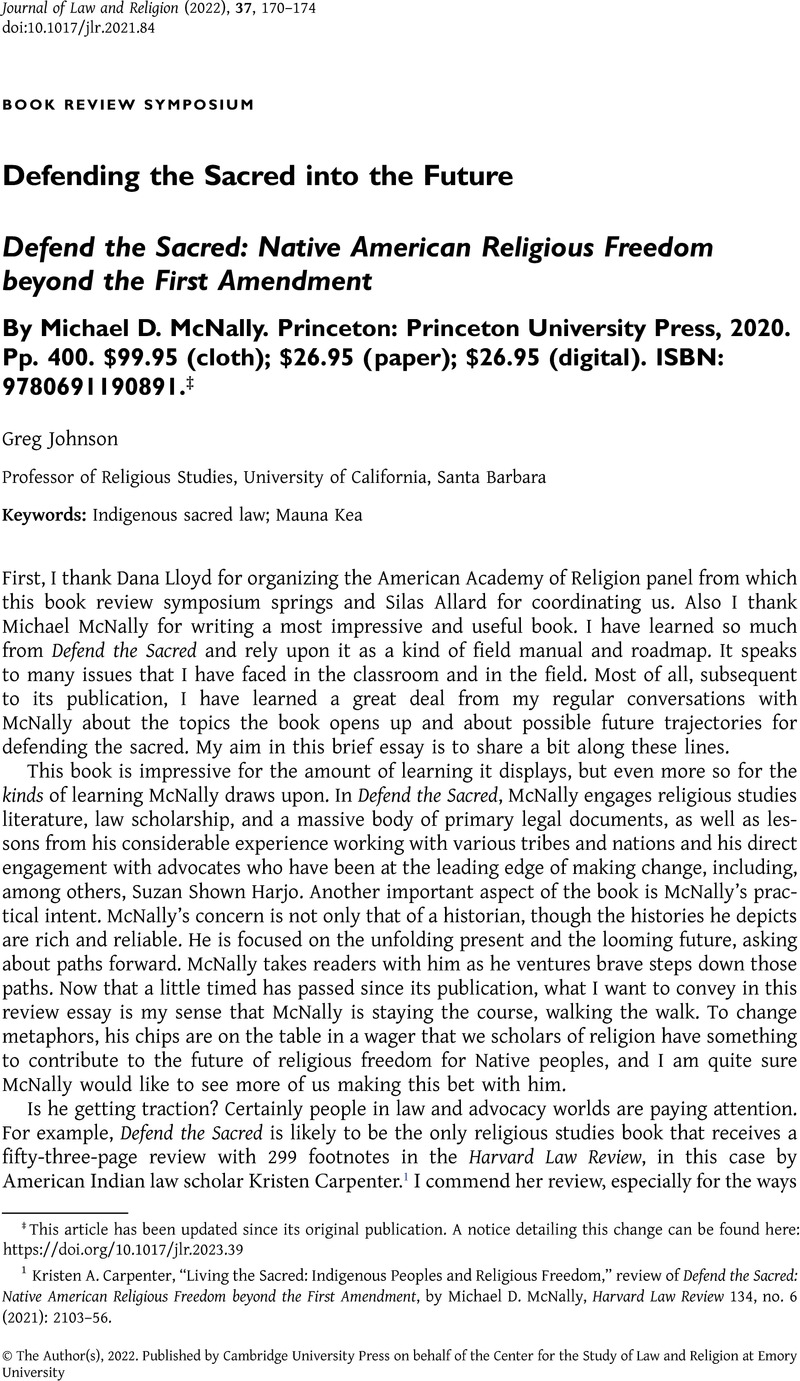Published online by Cambridge University Press: 02 February 2022

‡ This article has been updated since its original publication. A notice detailing this change can be found here: https://doi.org/10.1017/jlr.2023.39
1 Carpenter, Kristen A., “Living the Sacred: Indigenous Peoples and Religious Freedom,” review of Defend the Sacred: Native American Religious Freedom beyond the First Amendment, by McNally, Michael D., Harvard Law Review 134, no. 6 (2021): 2103–56Google Scholar.
2 See, for example, Sullivan, Winnifred Fallers, The Impossibility of Religious Freedom, new ed. (Princeton: Princeton University Press, 2018)Google Scholar; Hurd, Elizabeth Shakman, Beyond Religious Freedom: The New Global Politics of Religion (Princeton: Princeton University Press, 2017)Google Scholar; Sullivan, Winnifred Fallers et al. , eds., The Politics of Religious Freedom (Chicago: University of Chicago Press, 2015)Google Scholar.
3 Readers who may be unfamiliar with these movements can learn more at the websites for LandBack (www.landback.org) and the NDN Collective (www.ndncollective.org).
4 Lyng v. Northwest Indian Cemetery Protective Association, 485 U.S. 439 (1988).
5 In re Conservation District Use Application (CDUA) HA-3568, 431 P.3d 752, 795 (2018) (Wilson, J., dissenting).
6 United Nations Declaration on the Rights of Indigenous Peoples, G.A. Res. 61/295 (Oct. 2, 2007).
7 The Implementation Project (website), accessed December 6, 2021, https://un-declaration.narf.org/about/university-of-colorado/.
8 The White House, “White House Commits to Elevating Indigenous Knowledge in Federal Policy Decisions,” press release, November 15, 2021, https://www.whitehouse.gov/ostp/news-updates/2021/11/15/white-house-commits-to-elevating-indigenous-knowledge-in-federal-policy-decisions/.
Please note a has been issued for this article.